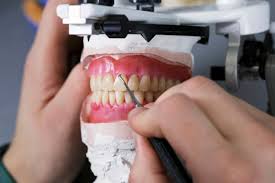
How Dental Labs Contribute to Aesthetic Dentistry
In the current dental industry, technology plays a crucial role in enhancing the efficiency, accuracy, and quality of dental labswork. From digital impressions, to advanced technology, CAD/CAM has revolutionized the ways dental labs operate, leading to better patient outcomes and efficient workflows.
One of the biggest innovations is the use for digital images. Traditional impression procedures often required painful, uncomfortable and messy materials that were susceptible to errors. Today, digital impression systems utilize intraoral scanners that can capture exact, 3D images of a patient’s teeth and gums. Digital impressions can be delivered directly towards the dental lab, reducing the chances of errors and the need to take physical impressions. This is not just beneficial for patient comfort but will also speed the process of creating dental restorations.
Another technological breakthrough is the integration computer-aided design (CAD) as well as Computer-Aided Production (CAM) technology. Software for CAD allows dentists to design restorations like bridges, crowns, and dentures, with incredible accuracy. After the design is completed, CAM technology takes over to manufacture the restoration. Using milling machines or 3D printers, the CAM system creates high-quality dental products from various materials, including ceramics as well as resins. This process reduces the amount of time required for production and ensures a high degree of accuracy.
3D printing has also been an important factor within dental labs. It permits the manufacturing of custom dental devices that include orthodontic aligners as well as surgical guides. 3D printing offers flexibility in terms of design and materials which allows for more customized treatments and faster turnaround times.
In addition, digital workflow integration enhances communication between dentists and dental labs. Cloud-based platforms and digital collaboration tools enable seamless sharing of data from patients and design files, facilitating greater coordination and reducing the chance of communication errors.
Overall, technology has transformed dental labs, making them more efficient and capable of delivering superior results. As technology continues to advance, dental labs are likely to see further advancements in accuracy, satisfaction of patients, and overall effectiveness in the field of dental.
Proudly powered by WordPress. Theme by Infigo Software.